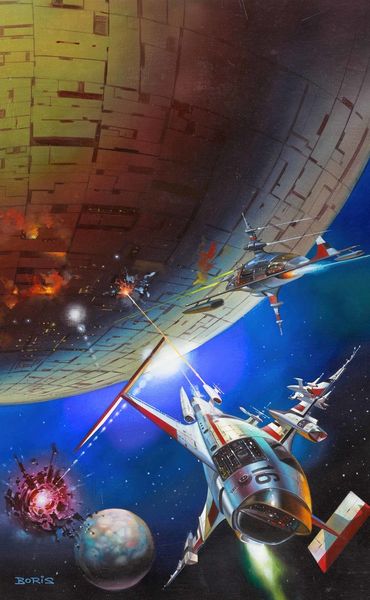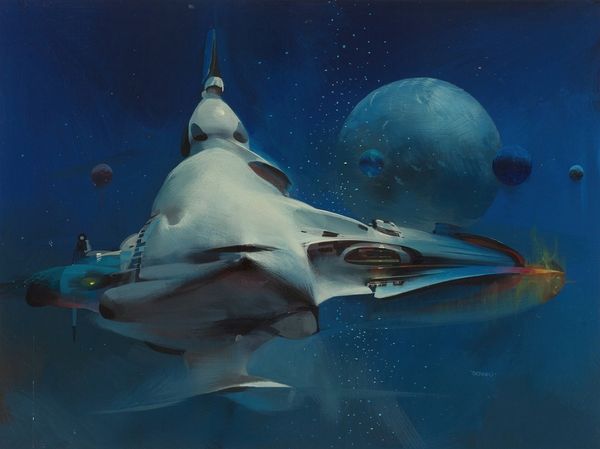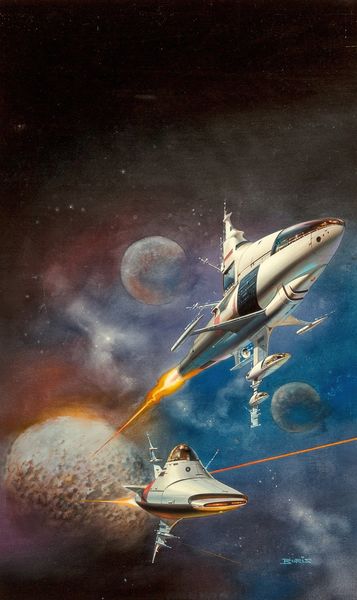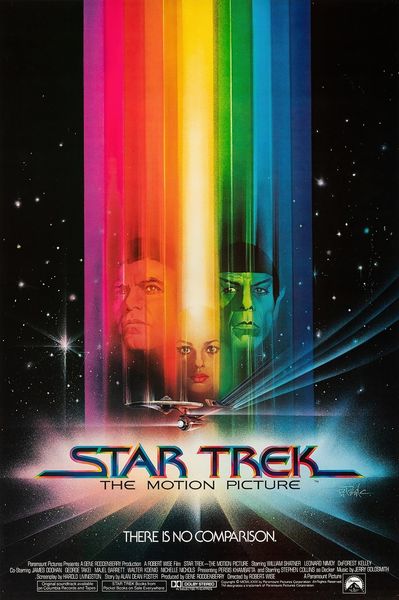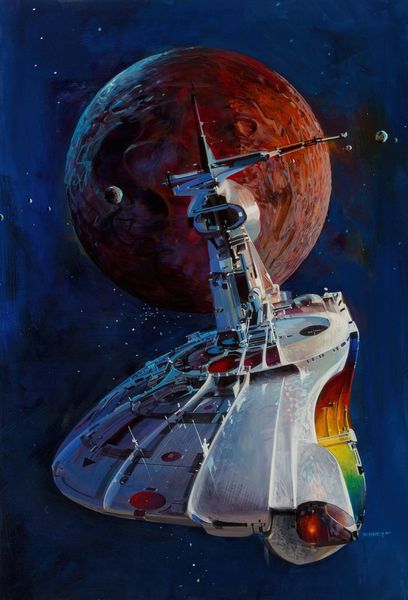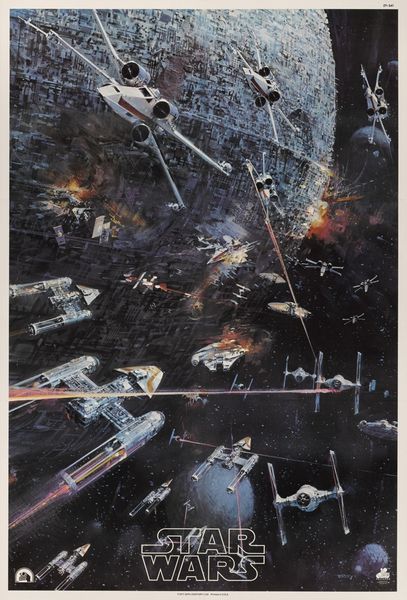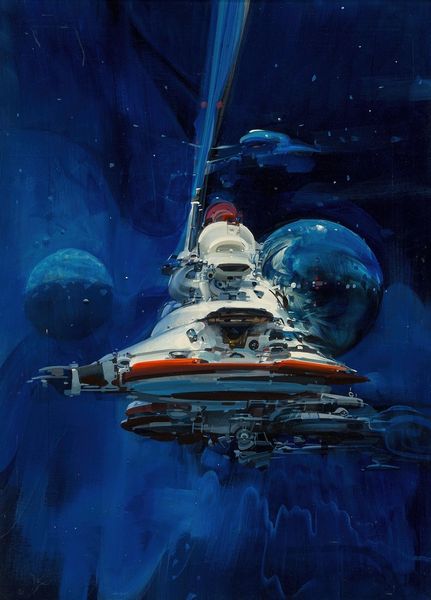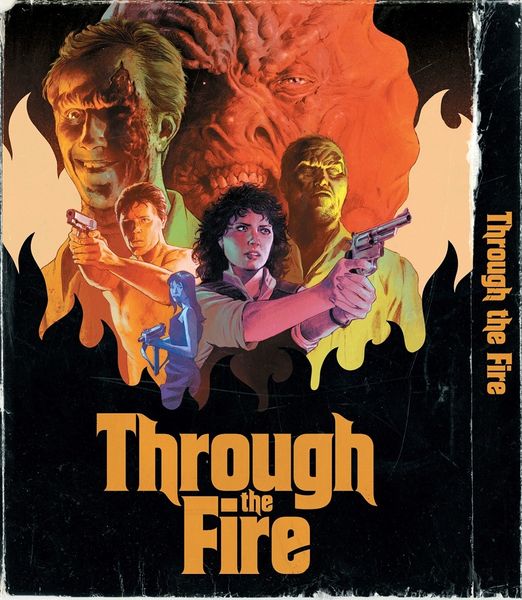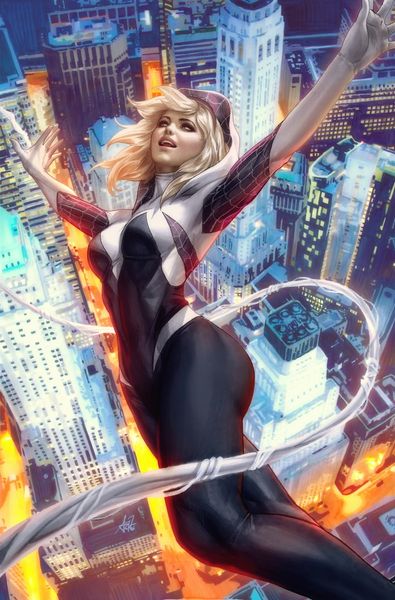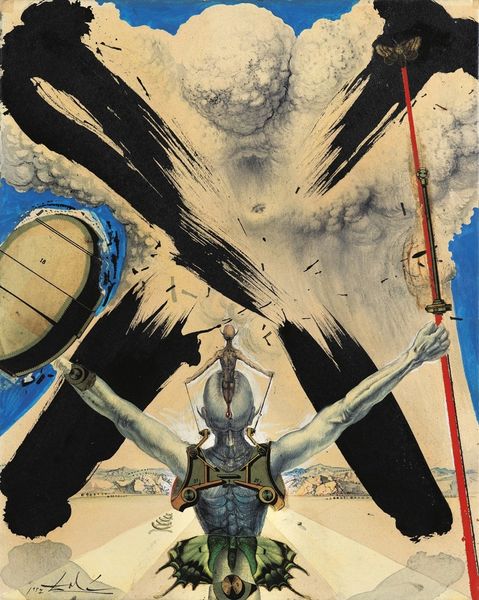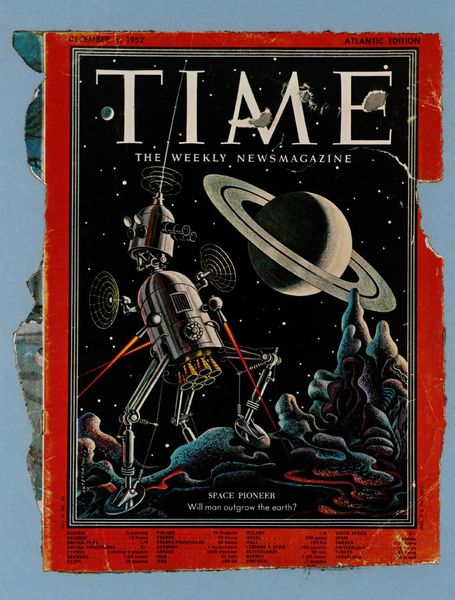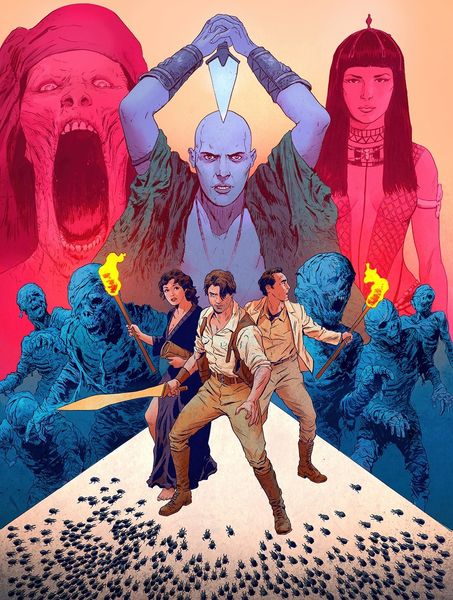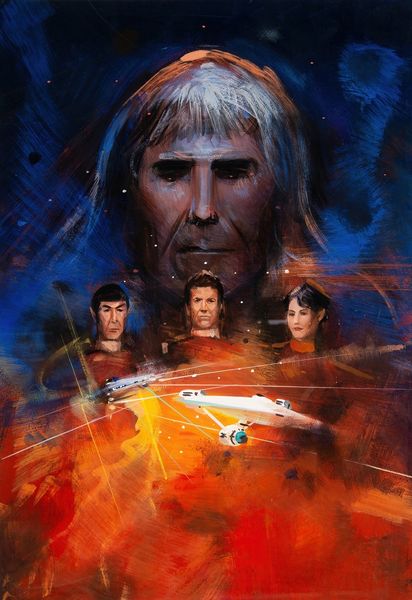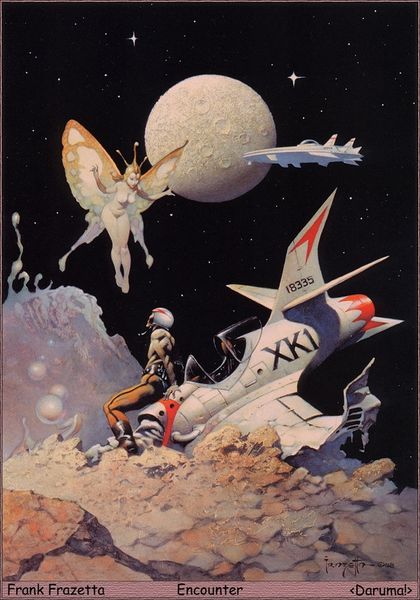
painting, acrylic-paint
#
painting
#
landscape
#
acrylic-paint
Copyright: Modern Artists: Artvee
Curator: Let's turn our attention to John Conrad Berkey’s paperback cover for "The Omega Threat," painted around 1980. Its medium seems to be primarily acrylic paint. Editor: The texture! Even at this distance, you can practically feel the grain of the paint, especially in how it interacts with light across those gigantic, imposing letters. The orange hues immediately suggest a sense of fiery danger. Curator: Precisely. Observe how the title isn’t just placed onto the composition, it *is* the composition. The words are monumental, almost architectural in their presence. They form a landscape that dominates the field of vision, bisected by the passage of the spacecraft. This creates a striking contrast between text and vehicle, static versus dynamic. Editor: That spacecraft is intriguing. It's a Space Shuttle, instantly recognizable, a symbol of American ingenuity and exploration at the time. Placing it in front of such bold lettering… it's as if technological progress itself is riding on this ‘Omega Threat’. Omega often symbolizes the end, the last – is Berkey suggesting the stakes are apocalyptic? Curator: That’s certainly one reading. Semiotically, we can examine the horizontal orientation. The spaceship is bisecting that textual plane as if it represents progress – cutting through potential disaster or limitation, represented by those large letters. Consider the visual weight given to textual presentation and compare that to representational elements. What can be interpreted from how the components occupy this frame? Editor: The choice to portray space as a landscape adds layers. We see planets, constellations – an infinite canvas punctuated by very terrestrial threats. By anthropomorphizing "threat" into such tangible letters, it internalizes humanity's existential angst in an unforgettable way. Berkey's design choices imbue simple letters with anxiety, while spacecraft signify something both daring and vulnerable. Curator: Well articulated! Through the application of acrylics and an impressive command of perspective, Berkey generates a spatial anomaly in this landscape format – asking what does space mean today – particularly regarding textual construction through physical materials like pigment application on paper stock surfaces during novel production design circa early 1980s . Editor: Looking at the book cover now with everything you have said I am still overwhelmed.
Comments
No comments
Be the first to comment and join the conversation on the ultimate creative platform.

